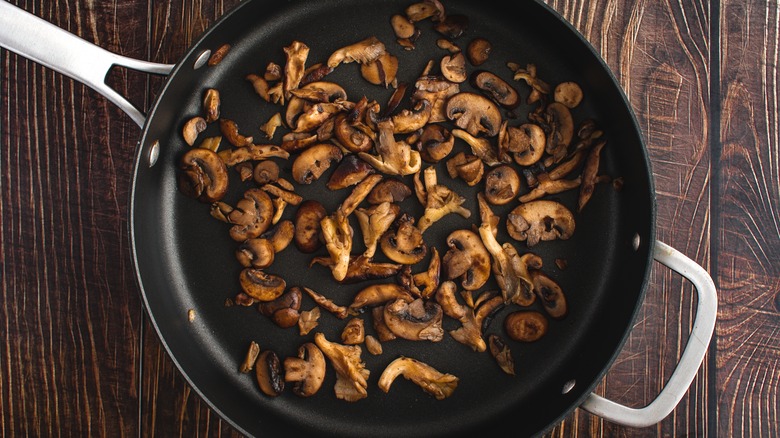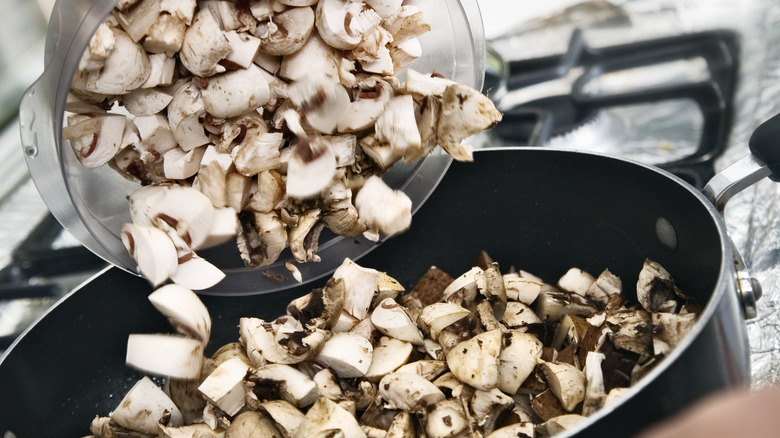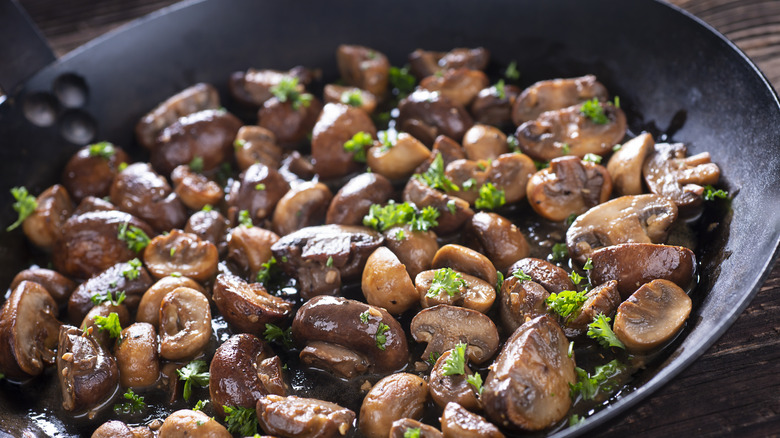The Genius Reason You Should Boil Mushrooms Before Sautéing
Mushrooms come with their own set of culinary rules. To get them browned, you should sauté them in a dry pan first, being careful not to overcrowd the pan, perhaps with some salt to coax the water out, and then season with fat, herbs, and a little freshly cracked black pepper. But remember, whatever you do, do not wash the mushrooms, not even to get the dirt off. All this is to get mushrooms brown and tasty instead of limp, gray, and slimy. However, contrary to all that advice passed from chef to chef, you can get just as good — if not better — color and flavor from boiling your mushrooms before you sauté them.
Mushrooms are mostly made of water and air, and due to this unique internal structure, they act like sponges, especially where oil and water are concerned. Sautéing them in oil first is a crucial mistake when cooking with mushrooms, as the oil will disappear, so you'll add more but then be left with soggy, oil-logged mushrooms. Cooking the mushrooms in water — although counterintuitive and unconventional — solves the problem of soggy mushrooms.
Starting your mushrooms in water intensifies their flavor
Mushrooms have a unique structure made of fibers called hyphae, which are around 90% water. This is where all that water comes from in the bottom of the pan when you dry sauté a mushroom. The other part is made of tiny air pockets, which is why oil tends to disappear when used to cook mushrooms as it gets sucked up into the fibers. When we cook mushrooms, both the water and the air are forced out of the hyphae, collapsing the air pockets and preventing any water or oil from entering the mushroom.
It will look strange when you start the mushrooms in water and they begin to boil, but keep going. Once the water evaporates, you're left with mushrooms that are cooked and ready to take on any flavorings or color you want. Think of it as using the sous vide then sear method for steak: You cook it until just done and then finish it to your tastes.
The trick is to not add too much water, as the mushroom already has enough of its own water – ¼ cup will do. You can keep adding water as needed until you reach your desired doneness, but don't use the same amount you would use for cooking pasta or potatoes. You'll find that the less water you add, the more concentrated the flavors become, so use only as much water as you need.
You cannot overcook a mushroom — really
Mushrooms are funny little things. The myth that mushrooms will soak up all the water has been busted by other chefs and food scientists. Boiling mushrooms before sautéing works because mushrooms are neither plant nor animal. This comes down to the mushroom itself — its internal structure is such that you literally cannot overcook a mushroom.
This is because of what makes up a mushroom's cell walls, which is a polymer called chitin. Coincidentally, it's the same polymer that a crustacean or insect exoskeleton is made of, so you have a general idea of what it's capable of. Chitin is heat stable, meaning it won't break down when exposed to high temperatures, whether that's boiling water or a dry sauté pan. After the hyphae — the fibers that contain water and air pockets — break down, all that's left is the chitin, which is why a mushroom won't turn mushy like an overcooked vegetable or dry like an overcooked steak. The mushroom retains its meaty texture, and you have delicious, browned, super flavorful mushrooms.


